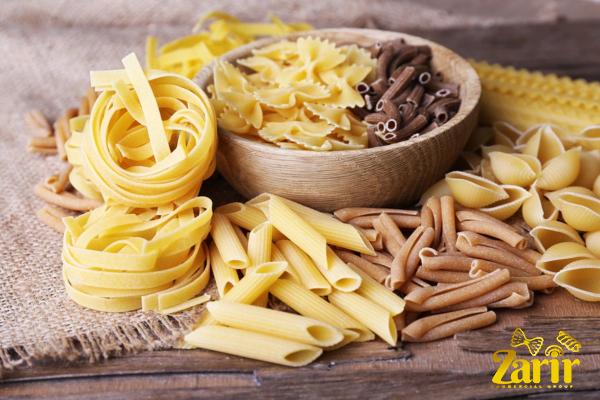In recent years, the demand for organic food has seen exponential growth, as health-conscious consumers prioritize sustainability and the overall well-being of both themselves and the environment. In line with this trend, organic lasagna has emerged as a go-to option for food lovers seeking a perfect harmony of taste, nourishment, and ethical sourcing. In this article, we delve into the delicious world of organic lasagna, exploring its health benefits, sustainable production methods, and organic ingredients that make it a standout choice for conscious consumers. 1. Health Benefits of Organic Lasagna: Organic lasagna is not just a treat for your palate, but also a boost for your health. Its organic ingredients, such as fresh vegetables, whole-grain noodles, and hormone-free meats, offer a range of nutritional benefits.

.
 Without the pesticides, chemicals, and growth hormones typically found in conventional food, organic lasagna provides a higher concentration of vitamins, minerals, and antioxidants. Additionally, the absence of genetically modified organisms (GMOs) makes organic lasagna an ideal choice for those concerned about potential health risks associated with genetically engineered ingredients. 2. Sustainable Production Methods: One of the defining characteristics of organic lasagna is its commitment to sustainable production methods. Unlike conventional farming, organic agriculture relies on natural processes and systems that promote soil health, conserve water, and protect biodiversity. Farmers utilize crop rotation, composting, and natural pest control methods to maintain a balanced ecosystem, ensuring the long-term health of both the soil and surrounding environment. By choosing organic lasagna, consumers actively contribute to a greener, more sustainable future.
Without the pesticides, chemicals, and growth hormones typically found in conventional food, organic lasagna provides a higher concentration of vitamins, minerals, and antioxidants. Additionally, the absence of genetically modified organisms (GMOs) makes organic lasagna an ideal choice for those concerned about potential health risks associated with genetically engineered ingredients. 2. Sustainable Production Methods: One of the defining characteristics of organic lasagna is its commitment to sustainable production methods. Unlike conventional farming, organic agriculture relies on natural processes and systems that promote soil health, conserve water, and protect biodiversity. Farmers utilize crop rotation, composting, and natural pest control methods to maintain a balanced ecosystem, ensuring the long-term health of both the soil and surrounding environment. By choosing organic lasagna, consumers actively contribute to a greener, more sustainable future.
..
 3. Organic Ingredients: At the heart of organic lasagna lies the use of premium-quality, organic ingredients. Fresh vegetables, grown without the use of synthetic fertilizers or pesticides, provide vibrant colors, robust flavors, and a delightful crunch. The meat used in organic lasagna is derived from animals raised on organic, grass-fed diets, resulting in leaner cuts with lower saturated fat content. Furthermore, organic lasagna noodles are made from whole grains, offering higher fiber content and a lower glycemic index compared to their refined counterparts. Combined, these organic ingredients create a lasagna that not only satisfies the taste buds but also nourishes the body. 4. Supporting Local Producers: By opting for organic lasagna, consumers have the opportunity to support local farmers and food producers.
3. Organic Ingredients: At the heart of organic lasagna lies the use of premium-quality, organic ingredients. Fresh vegetables, grown without the use of synthetic fertilizers or pesticides, provide vibrant colors, robust flavors, and a delightful crunch. The meat used in organic lasagna is derived from animals raised on organic, grass-fed diets, resulting in leaner cuts with lower saturated fat content. Furthermore, organic lasagna noodles are made from whole grains, offering higher fiber content and a lower glycemic index compared to their refined counterparts. Combined, these organic ingredients create a lasagna that not only satisfies the taste buds but also nourishes the body. 4. Supporting Local Producers: By opting for organic lasagna, consumers have the opportunity to support local farmers and food producers.
…
 Organic farms tend to be smaller and family-owned, fostering a closer connection between producers and consumers. This not only contributes to the local economy but also promotes transparency and traceability in the food supply chain. Consumers can be assured of the origin and quality of the ingredients used in their lasagna, reinforcing the trust and accountability that comes with supporting local, organic producers. Conclusion: Organic lasagna offers a delectable culinary experience without compromising on health or environmental sustainability. With its nutrient-rich ingredients, sustainable production methods, and support for local farmers, organic lasagna embodies the fusion of taste and social responsibility. As the demand for organic food continues to rise, it comes as no surprise that organic lasagna has become a beloved choice for individuals seeking a delicious, guilt-free meal. So, why not embark on a flavorful journey of conscious eating and savor the greatness that organic lasagna brings to the table?
Organic farms tend to be smaller and family-owned, fostering a closer connection between producers and consumers. This not only contributes to the local economy but also promotes transparency and traceability in the food supply chain. Consumers can be assured of the origin and quality of the ingredients used in their lasagna, reinforcing the trust and accountability that comes with supporting local, organic producers. Conclusion: Organic lasagna offers a delectable culinary experience without compromising on health or environmental sustainability. With its nutrient-rich ingredients, sustainable production methods, and support for local farmers, organic lasagna embodies the fusion of taste and social responsibility. As the demand for organic food continues to rise, it comes as no surprise that organic lasagna has become a beloved choice for individuals seeking a delicious, guilt-free meal. So, why not embark on a flavorful journey of conscious eating and savor the greatness that organic lasagna brings to the table?










Your comment submitted.